On 26 October, Wing Commander Andy Green strapped himself into the cockpit of his Bloodhound SSC Land Speed Record car and fired it down the 9000ft runway at Newquay airport in Cornwall.
1000mph Bloodhound SSC successfully completes first test
Since the tests were successful, the team will decamp to Hakskeenpan in South Africa’s share of the Kalahari Desert next autumn and, this time using a rocket to assist its jet engine, Green will attempt to drive it past 800mph, breaking his own 20-year land speed record of 763mph.
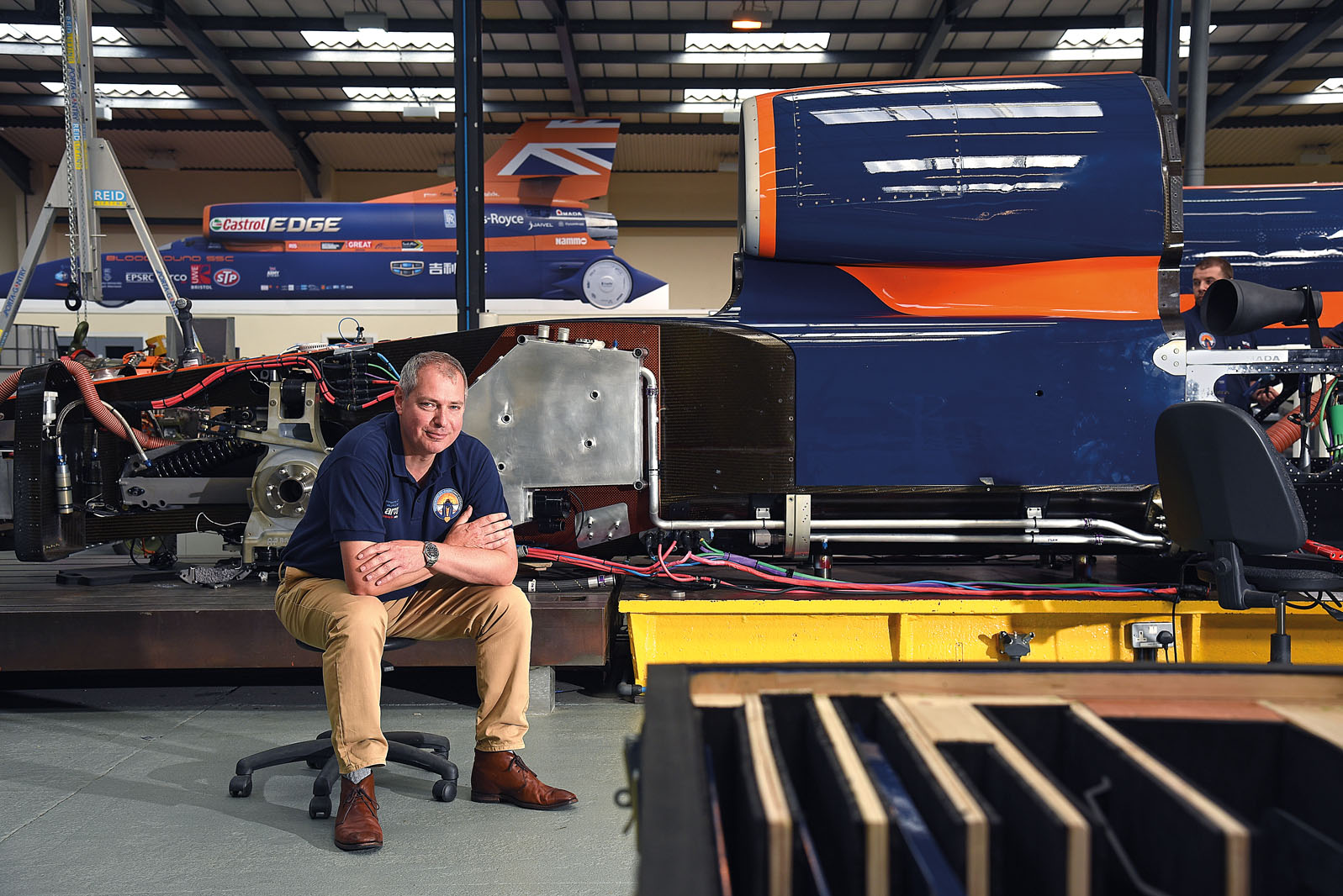
By then, and even before the rocket has been completely reconfigured to allow it to go for the full 1000mph in 2019, the project will have been in the public domain for a full decade, dogged not only by the engineering challenges of doing what man has never done before but also the no less daunting task of keeping the funds flowing. So far, it has cost about £30 million, less money in 10 years than Neymar will earn in one – and, for periods when the flow has slowed to a dribble, progress has been very slow indeed. But the funds were there to get it to Newquay and, while the car did just 200mph, it is hoped the resulting publicity will keep interest alive and funds flowing all the way to the Northern Cape.
I’ve been fascinated by Bloodhound ever since Richard Noble and Green went public with their plans on 23 October 2008. Even so, the sheer enormity and audacity of what is being attempted retains the ability to reduce the most seasoned of hacks to gasps. While there have been many successful jet-powered land speed record cars and just one successful rocket car, there has never been one that attempted to combine both technologies. The rocket is so powerful that, one year after the project was announced, the team realised that if it continued to sit on top of the engine, it would bury the car’s nose in the desert when it fired. So the entire car was re-engineered to swap them around.
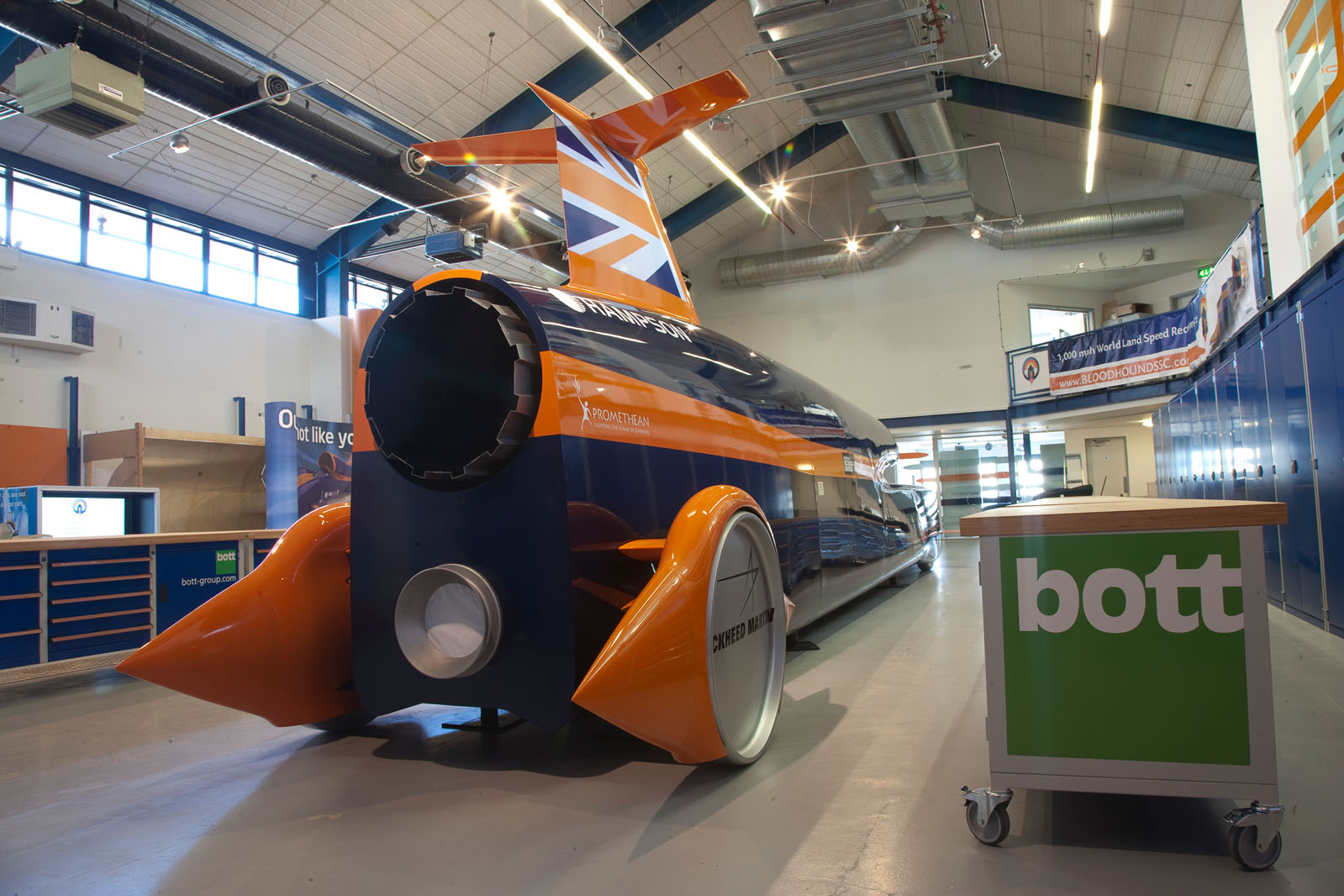
Then there is the feat itself. To qualify for a new land speed record, you must raise the bar by at least 1% – 7.63mph, in this case. Now consider that in the 32 years before Thrust SSC came along in 1997, the record had been raised by just 32mph. In one season, Thrust SSC added a further 130mph, punching a hole in the sound barrier on the way, but Bloodhound is designed for 1050mph, not far off 300mph faster than anyone has ever travelled across the surface of the planet. To me, what they are trying to achieve is almost unimaginable. But they have the tools to do it.
The jet engine is an early experimental EJ200 unit developed for use in the Eurofighter Typhoon. Yet, with the aid of a Nammo rocket, it produces so much power that it will go fully 200mph quicker at sea level than the Typhoon, despite the Typhoon having two EJ200s. All by itself, the jet engine produces nine tonnes of thrust, yet it weighs just one tonne. By contrast, the Rolls-Royce Spey engines used 20 years ago on Thrust SSC produced just eight tonnes of thrust despite weighing two tonnes each.
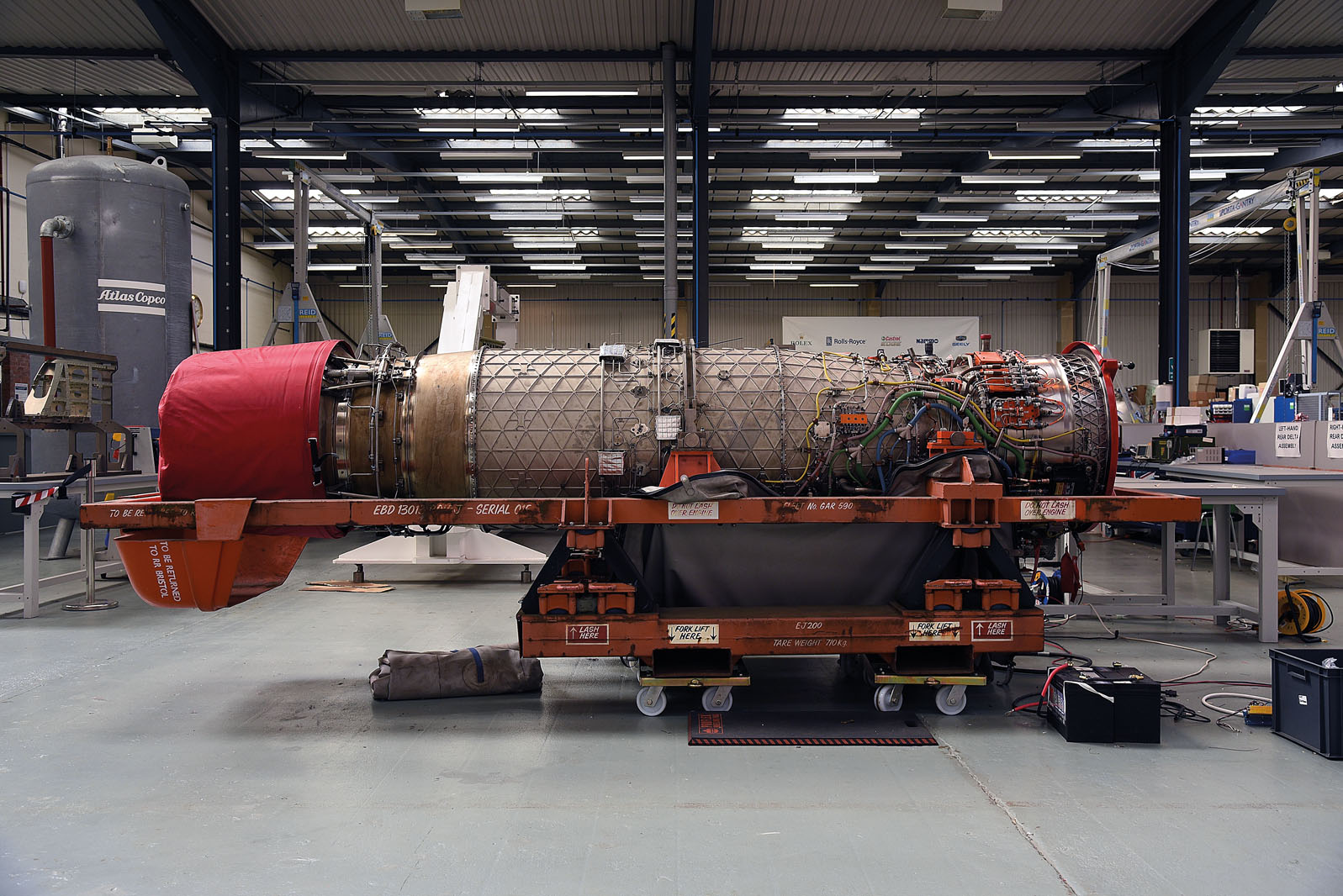
The Typhoon aircraft has two of these engines, Bloodhound just one. So what? Well, quite a lot as it happens, because they work in tandem and each relies on the other with a constant flow of data to make sure they are perfectly synchronised at all times. Before Bloodhound, no one had ever run one on its own. So the engineers designed what they called ‘a Typhoon in a box’, which, as its name implies, is literally a small metal box that fooled the EJ200 into thinking it was in an aircraft. If you went to an external contractor and asked them to design a control system for the engine from scratch, it would cost tens and possibly hundreds of thousands of pounds. Chapman estimates his Typhoon in a box cost £300.
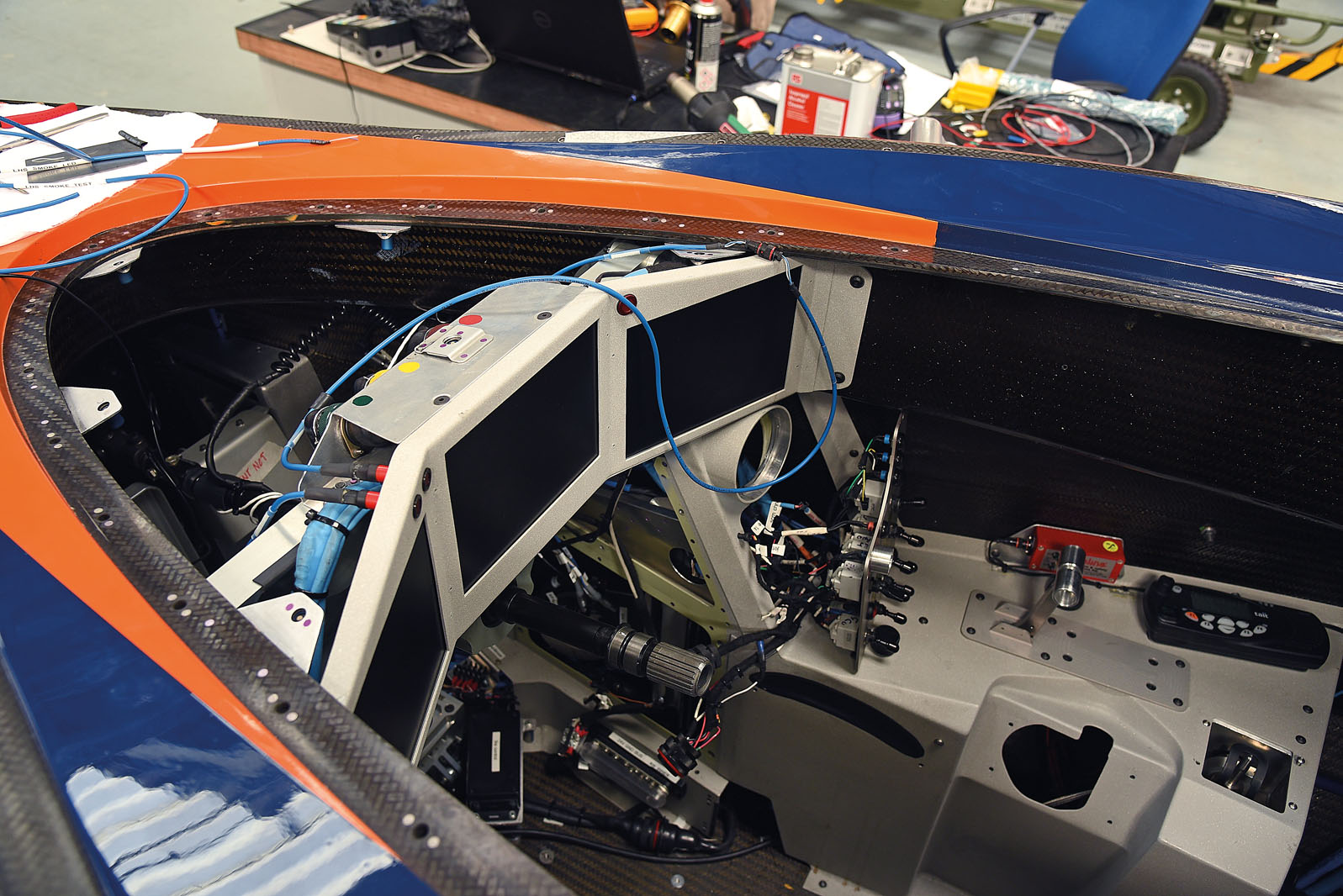
So far, so good. To get around the data issue, they tried to fool the engine into believing it was tied to another by feeding it its own information. Very clever. But not quite clever enough because the data the engine was receiving was of course the identical twin of that which it was transmitting and, in the real world, that never happens. The engine knew this, grew suspicious and refused to work. I am not kidding. It was only when they engineered in a fractional delay into the data transfer so it was being fed minutely old information that it was finally satisfied. When shown the £300 solution, the data engineers at Rolls-Royce who designed most of the original EJ200 could barely believe what they were seeing.
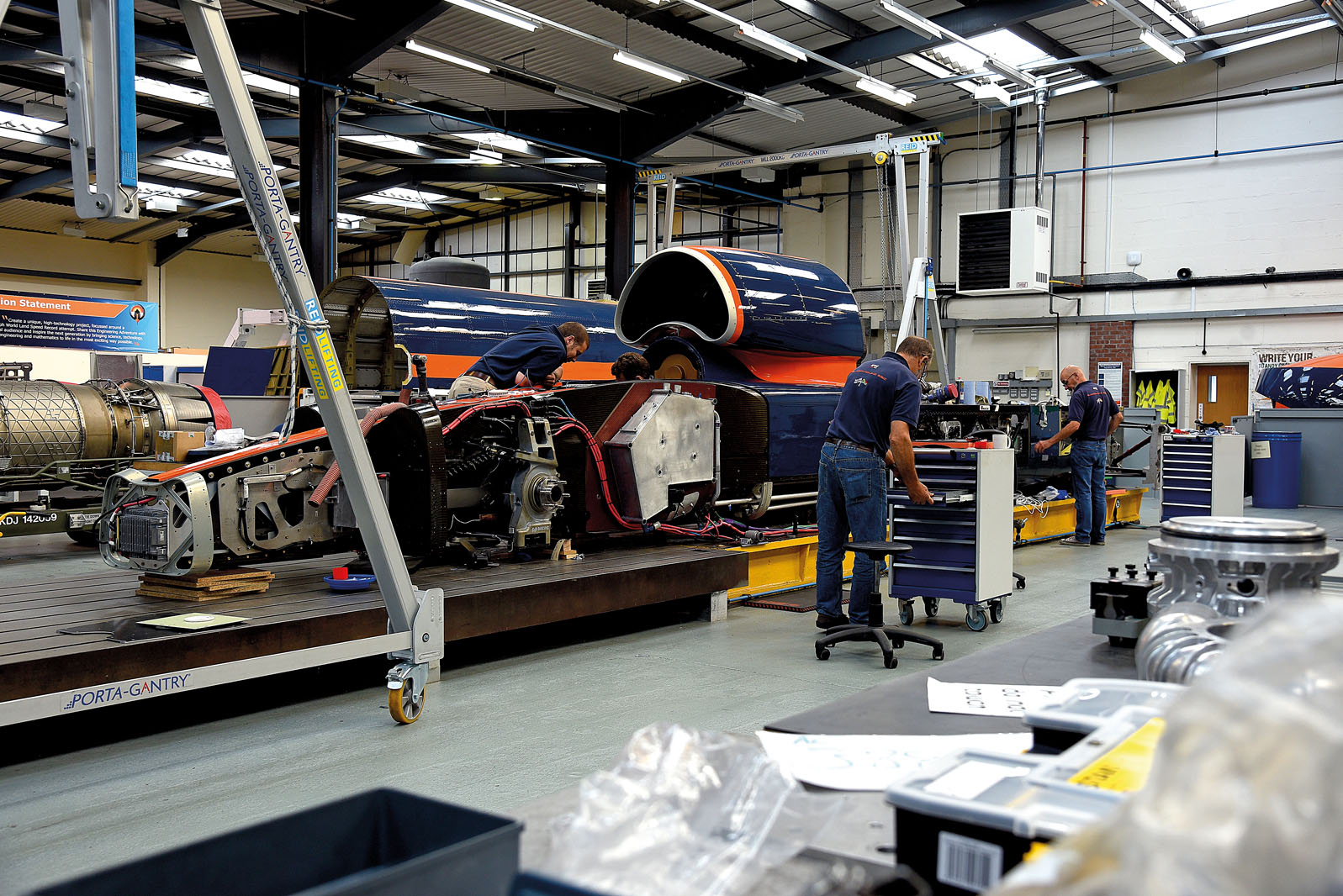
But there was another problem. The defining characteristic of the aircraft for which the engine was designed is that it flies. By contrast, the very firm intention for Bloodhound is that it remains at all times connected to the planet. Which means it’s going to be breathing quite a lot of sand. How much? Well, at full chat, the EJ200 requires 64,000 litres of air per second so, to save you the maths, if you hooked up its intake to the open window of an average house, it would suck every atom of oxygen out of it in three seconds flat. So they needed to make sure the engine would be okay not only on a sand-rich diet but also a Hakskeen sand-rich diet. Particularly, they needed to make sure that when it got really hot, it didn’t turn to glass and block all the minute cooling holes in the EJ200’s inner casing. This is important because – get this – the core temperature of the engine is much higher than the melting point of the metal from which it’s made. And yes, they do have a spare engine but both belong to the Ministry of Defence and they would like them back in the same condition in which they lent them. They did the tests and it was fine.
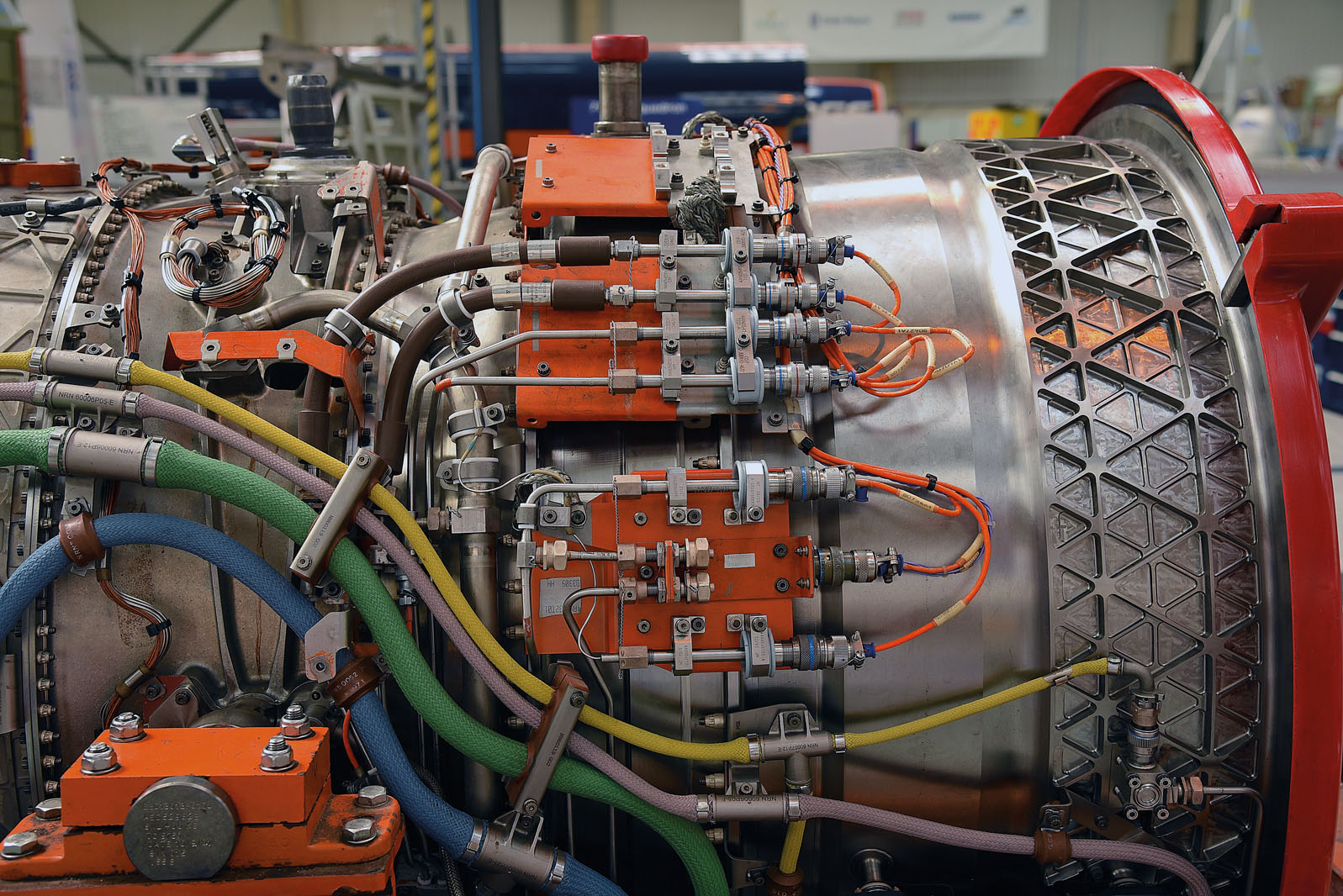
And yet there is still so much that Chapman and his team don’t know and, indeed, will still not know until the car has been run in South Africa at far greater speeds than will be possible in Cornwall.
“Our focus is going to be finding out how the shockwave forms around the car and how the wheels interact with the desert,” he says. “We can do simulations that give us a good idea of what should happen, but to find out what will happen requires us to try it for real.”
That’s why even just to beat the existing record next year, the team intends to be on the desert for two or three months, conducting test after test and not progressing to the next one until all data has been downloaded, analysed and understood. To give you an idea of how the environment changes and why there is no substitute for real-world testing, Chapman reckons that, above the speed of sound, air pressure on the wheels will be more responsible for steering the car than their grip on the ground. That means they will effectively be acting as supersonic rudders, I am told.
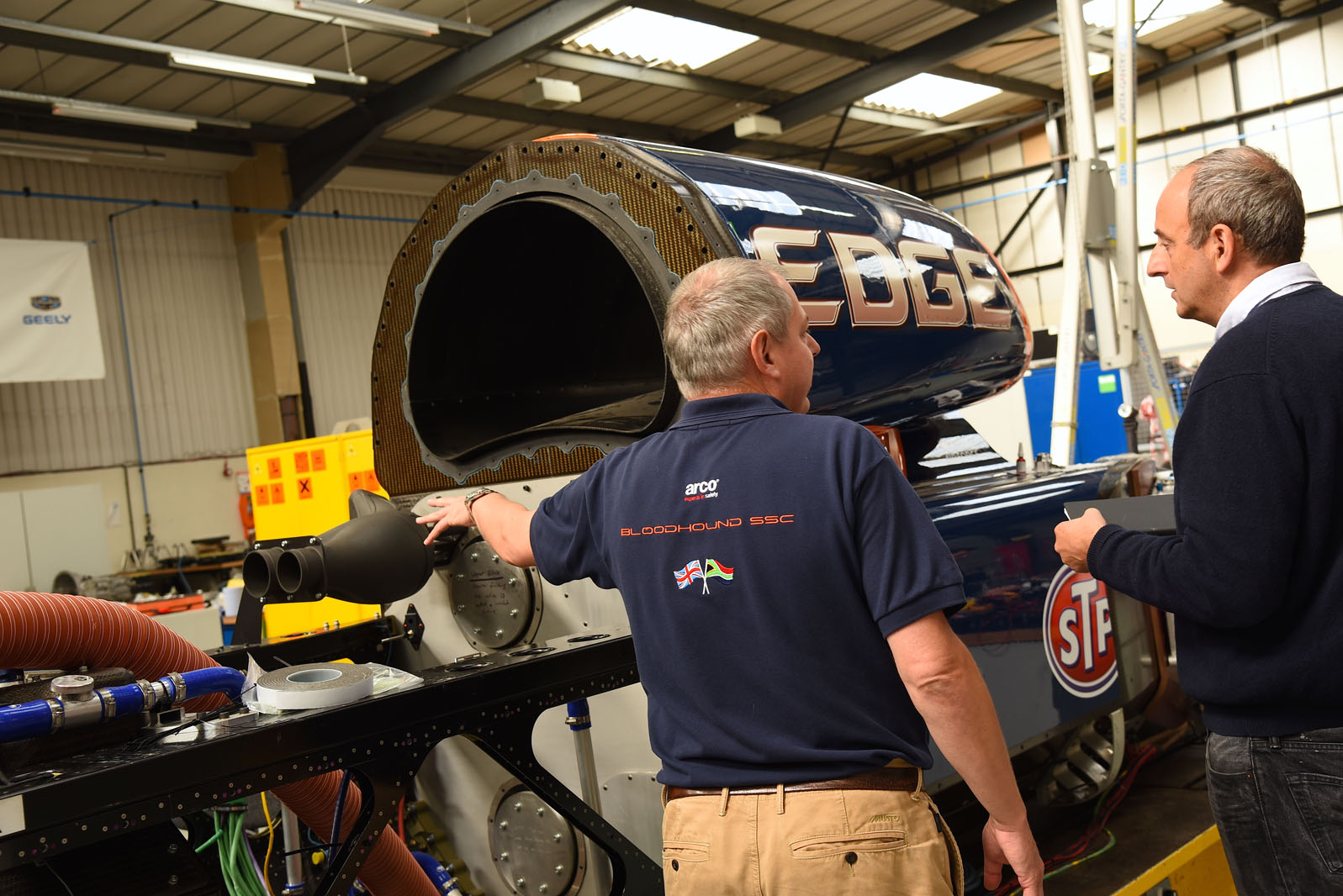
And yet, in true British land speed record-breaking tradition, there is some stuff on the car that wouldn’t look out of place in Halfords. The triggers that fire the rocket are a fine example. There are aerospace triggers available costing thousands that would do the job or, as Chapman says, you can just use one that’s cheap, has already been tested to destruction and is available in any DIY shop. Which is why when Green fires the Nammo, it will be with a trigger from a domestic drill.
The Bloodhound SSC project is fascinating not just for its almost unbelievable ambition and the guts and determination required to realise it, but also because of the wonderfully pragmatic and imaginative way it is being engineered. I love the fact that some of the most advanced technologies in the world are being used to complete a task for which they were never designed, and that they can sit in harmony with such everyday items as a trigger from a drill. I wish them all the very best with it, too: if fortune really does favour the brave, little more than two years from now, one intrepid driver will have travelled on earth at over one thousand miles per hour.
Related stories:

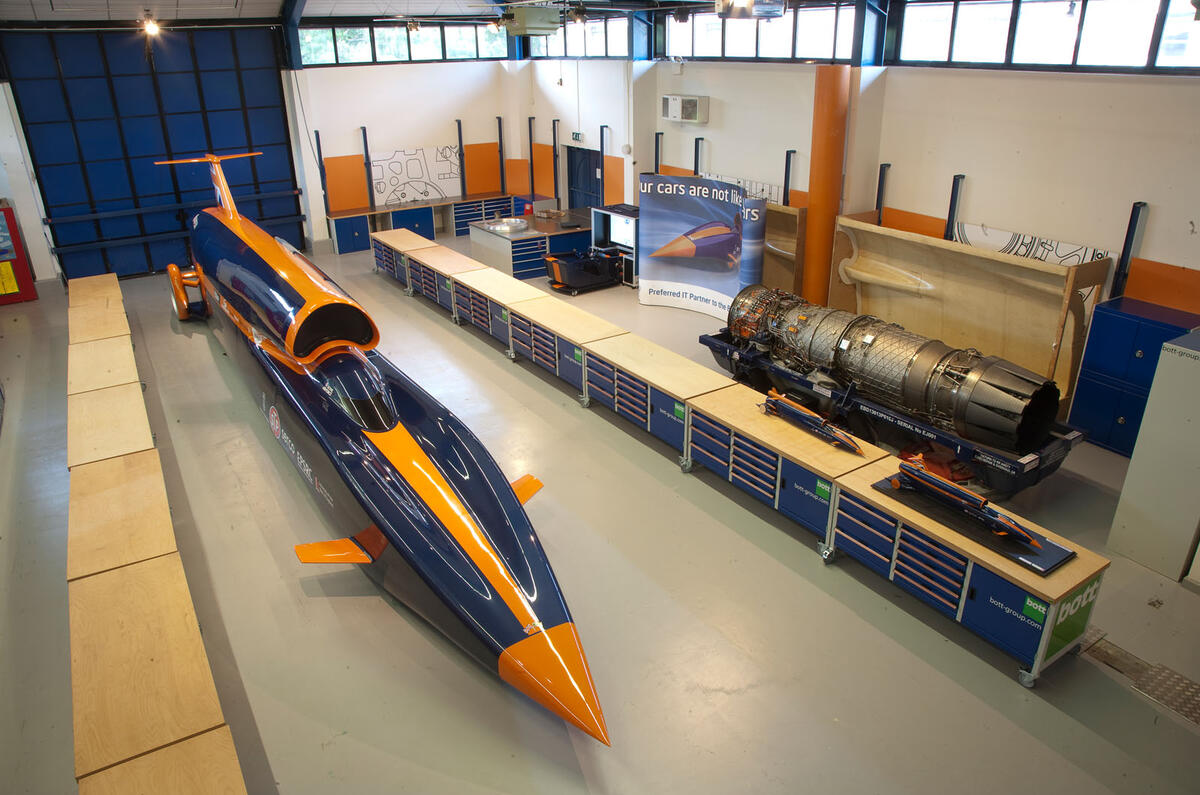
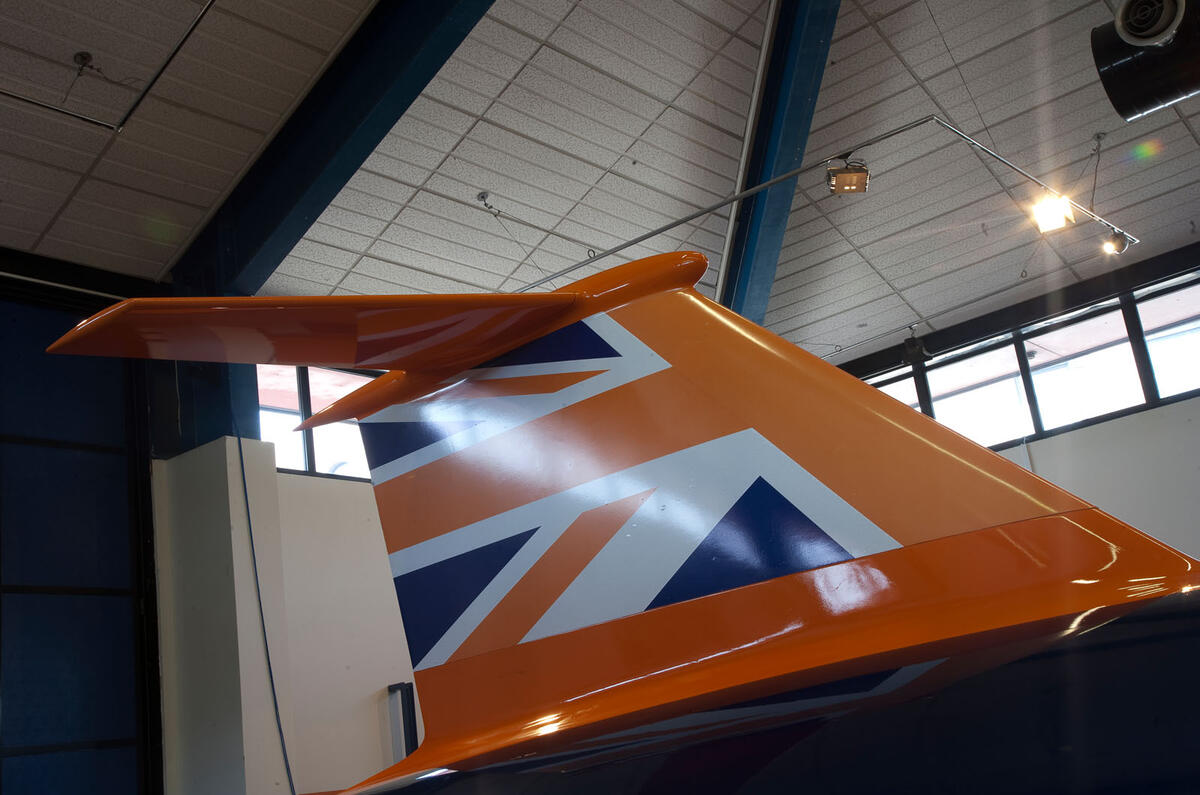
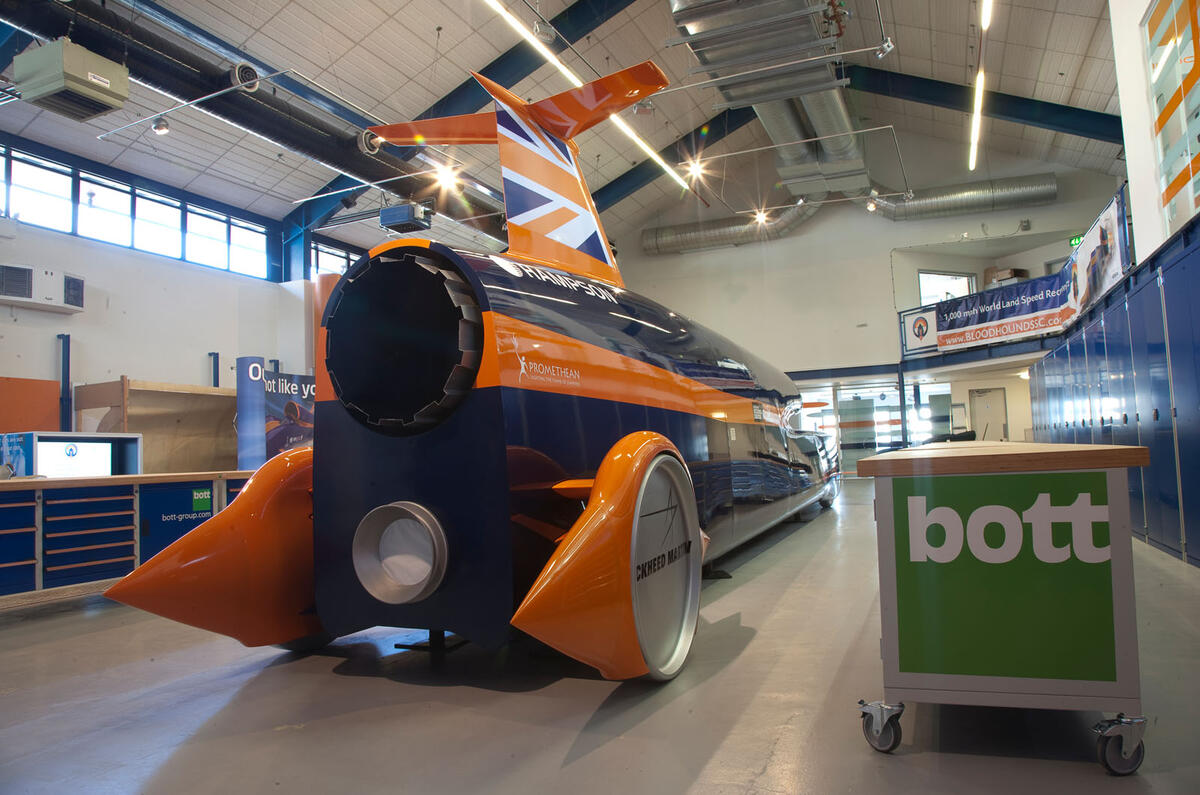
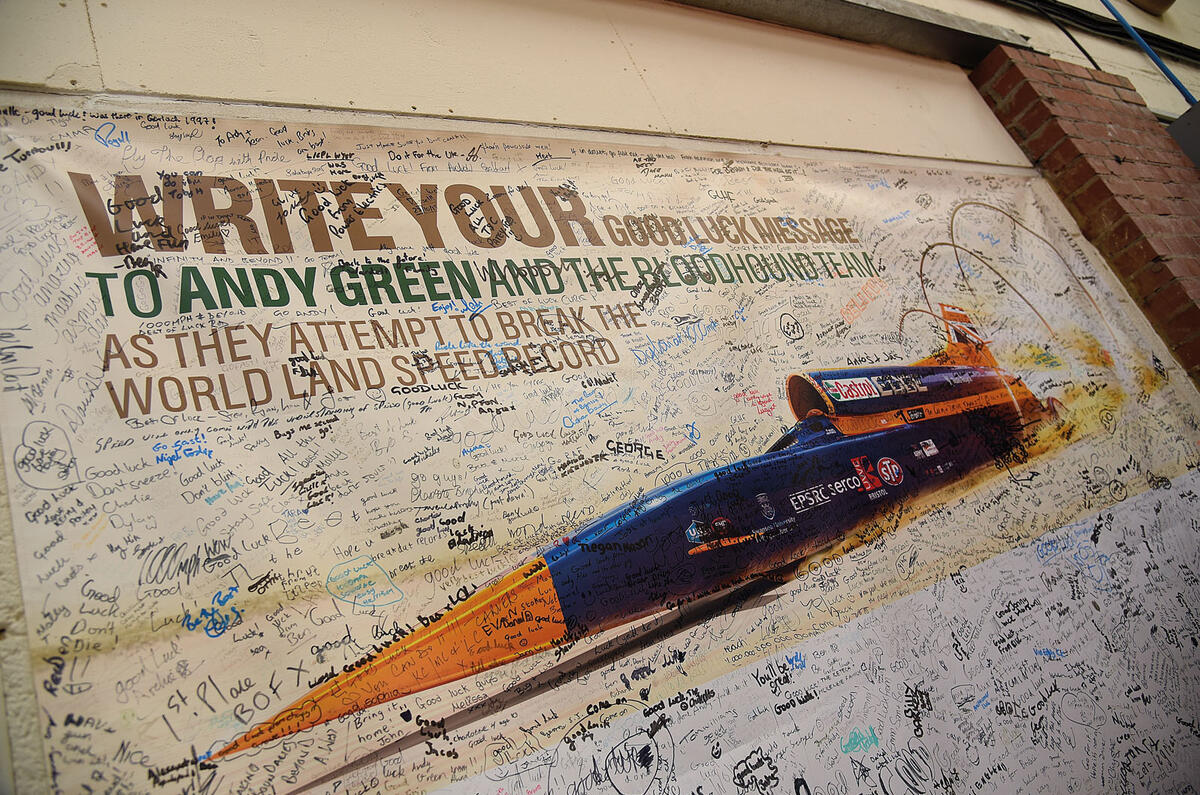

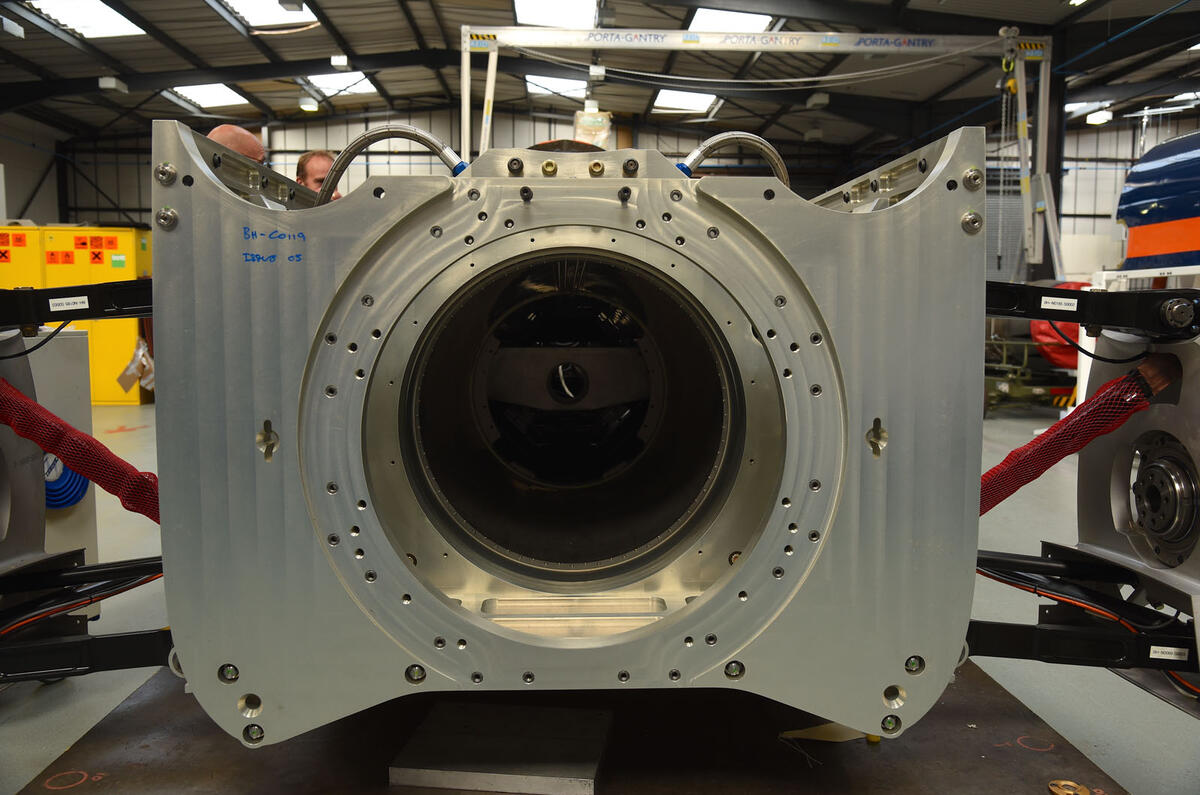
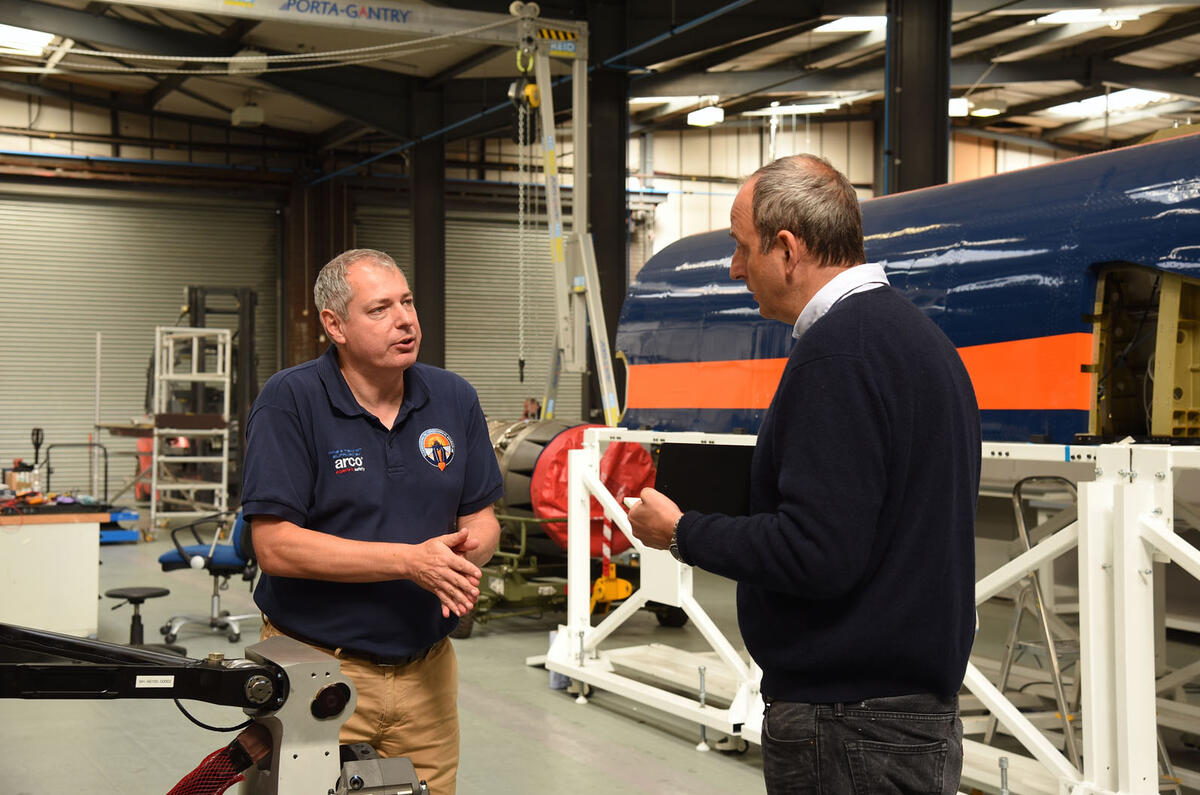
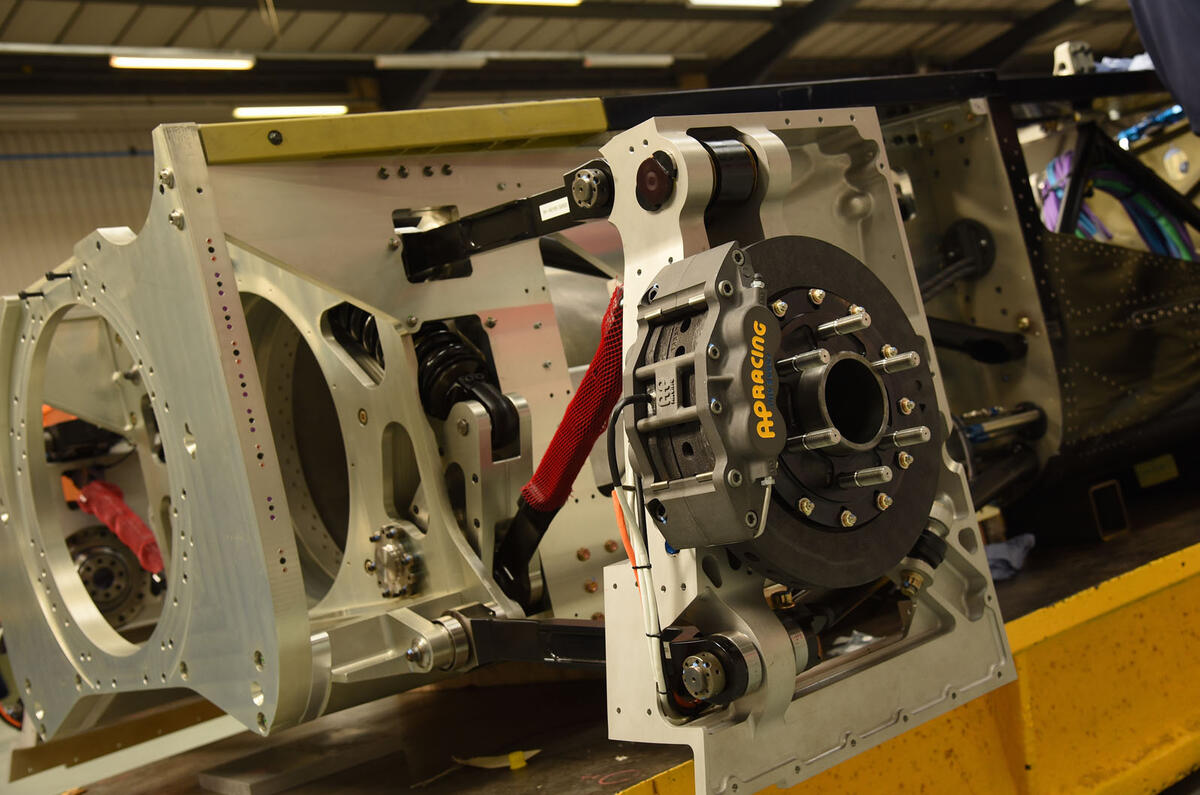
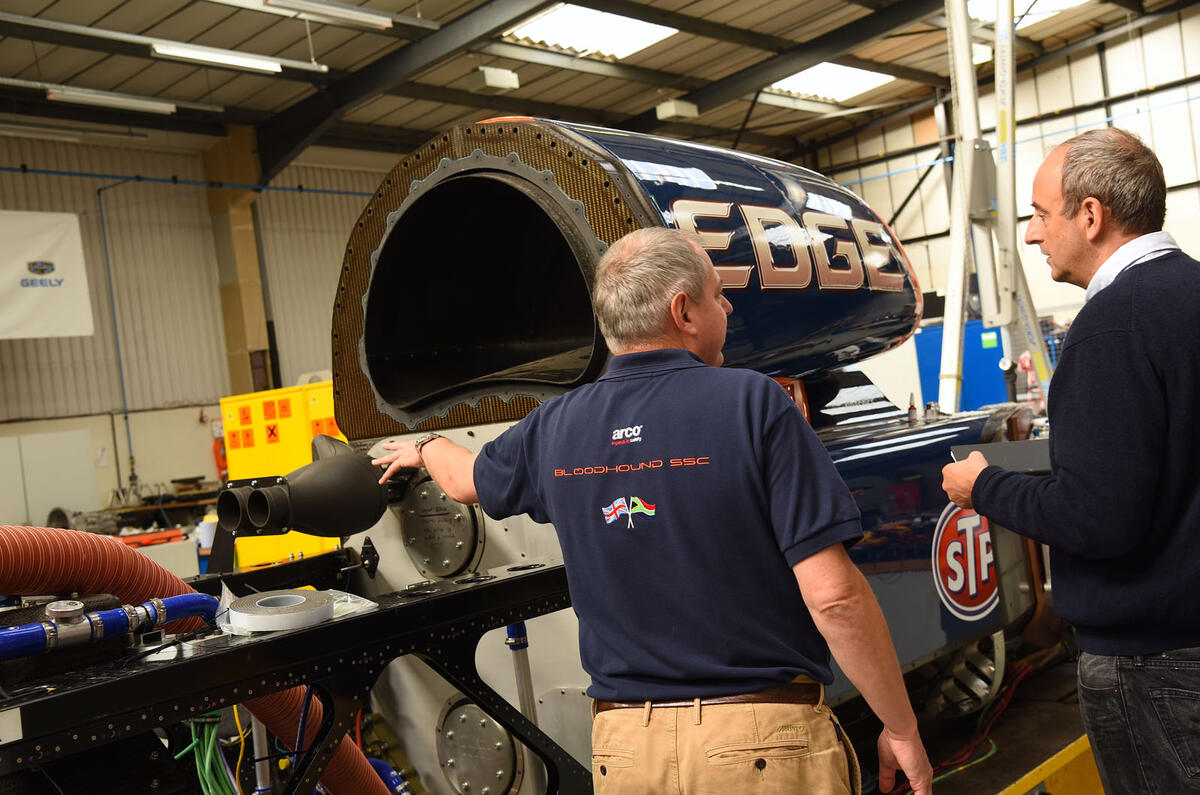
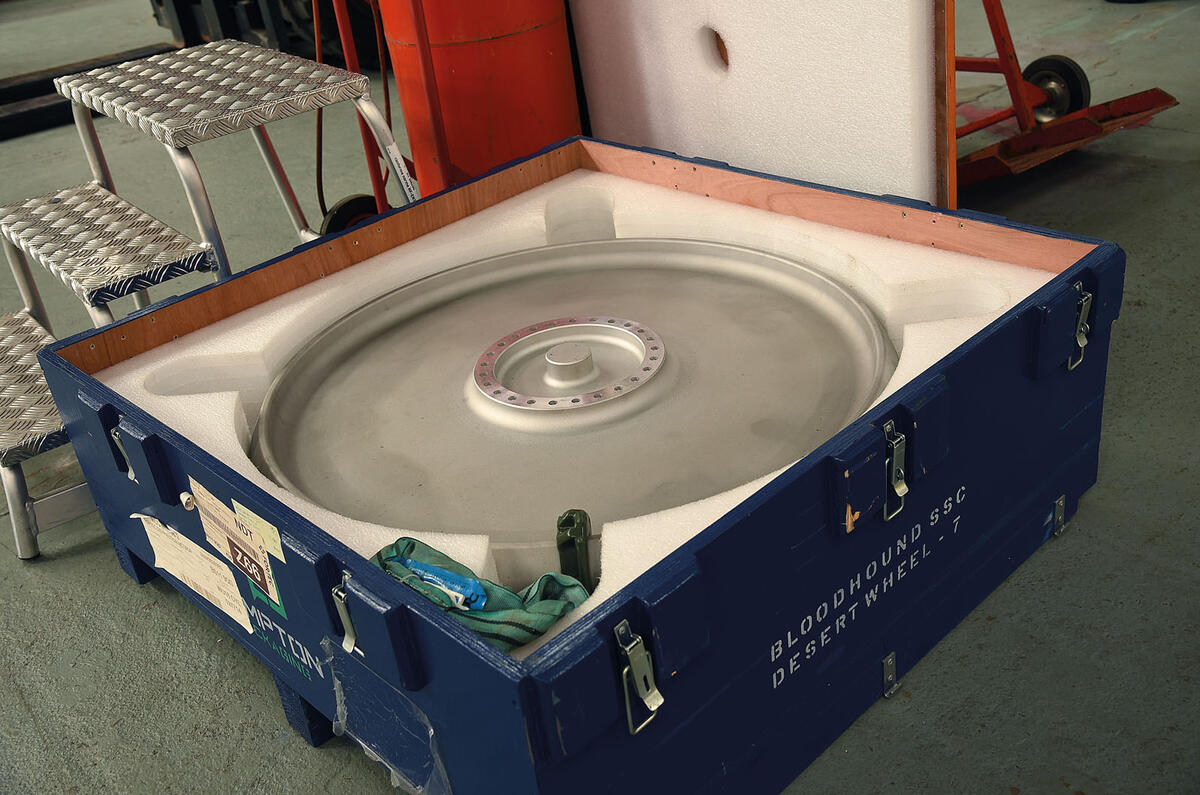
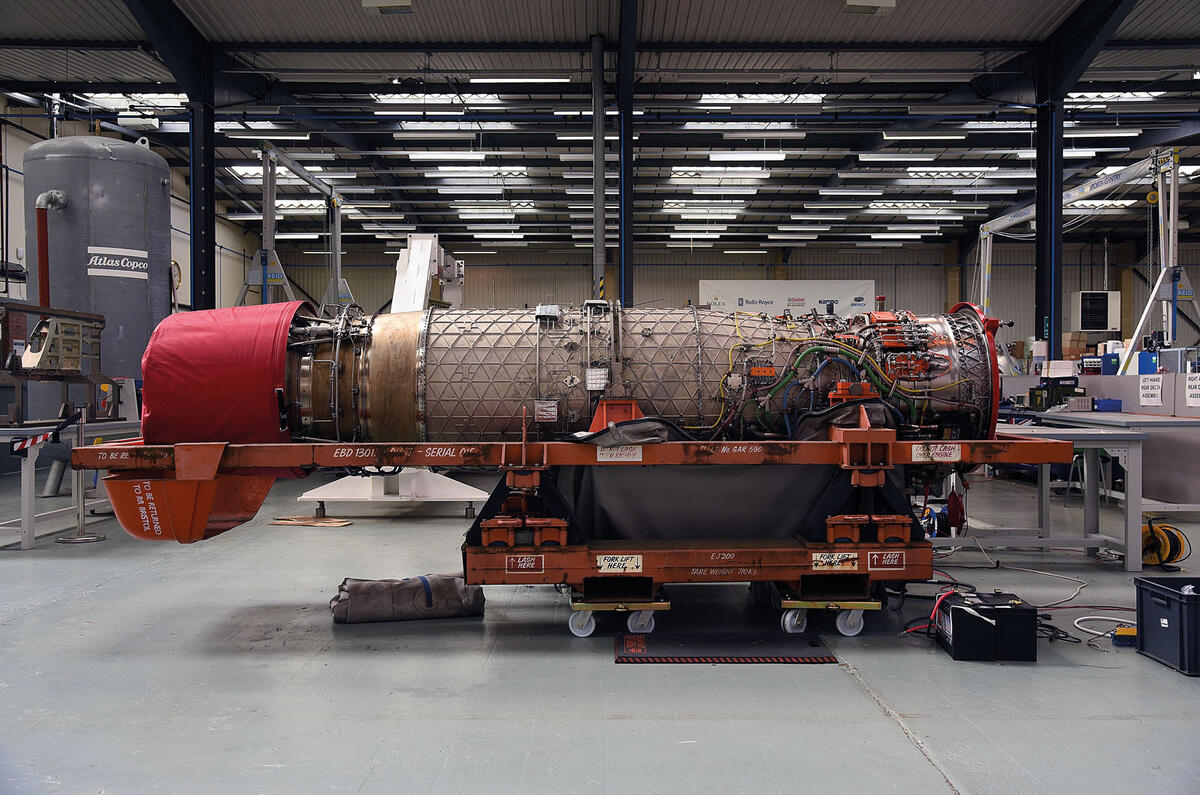
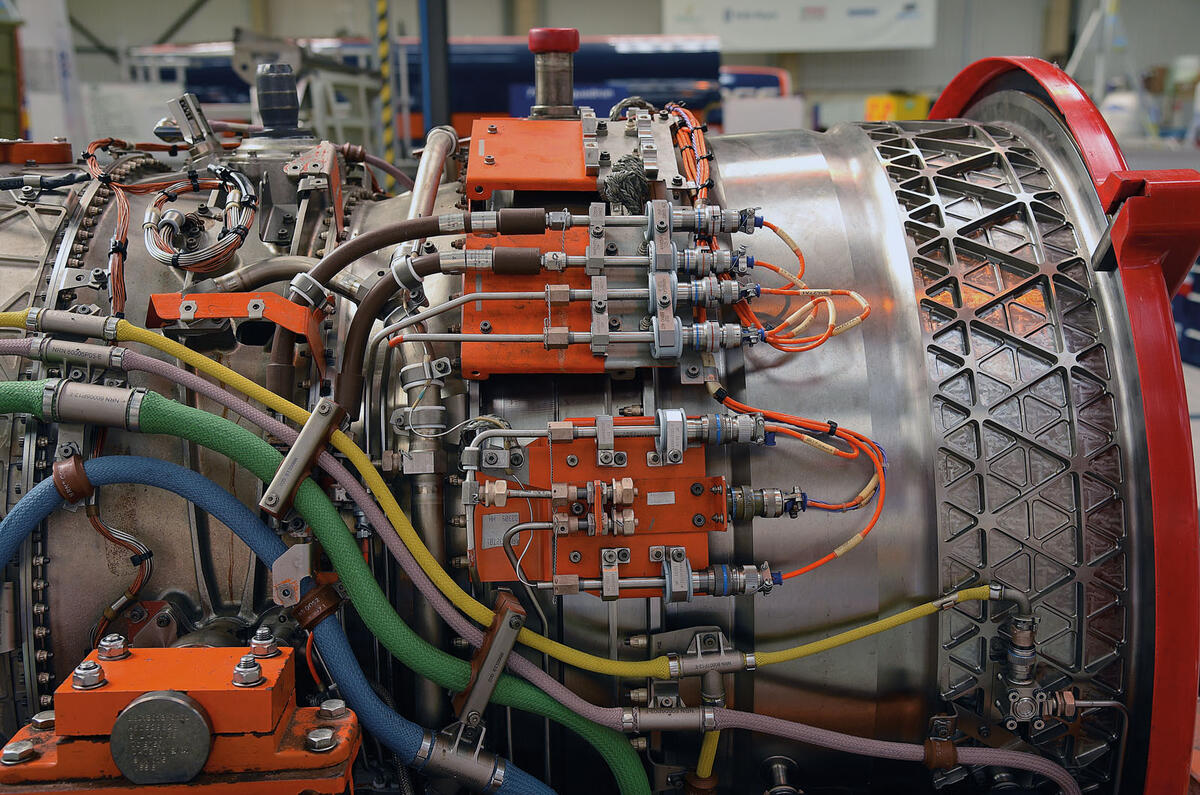
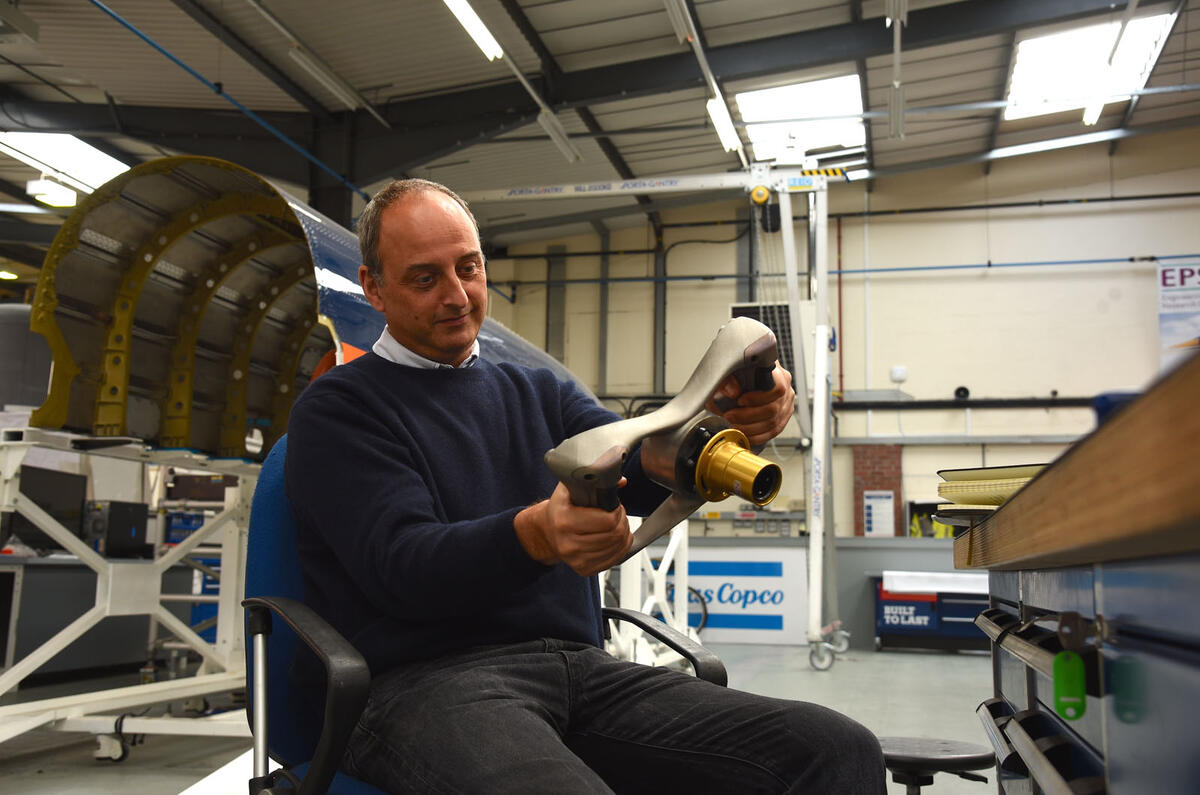
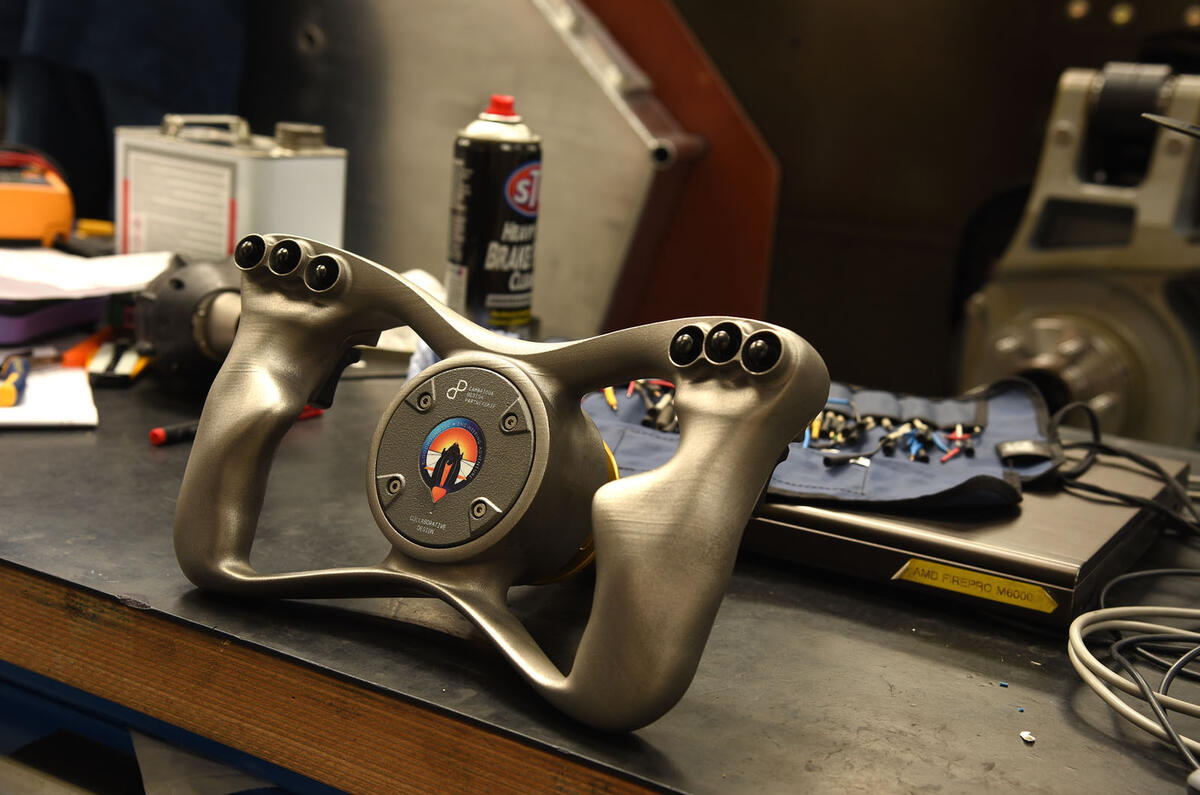
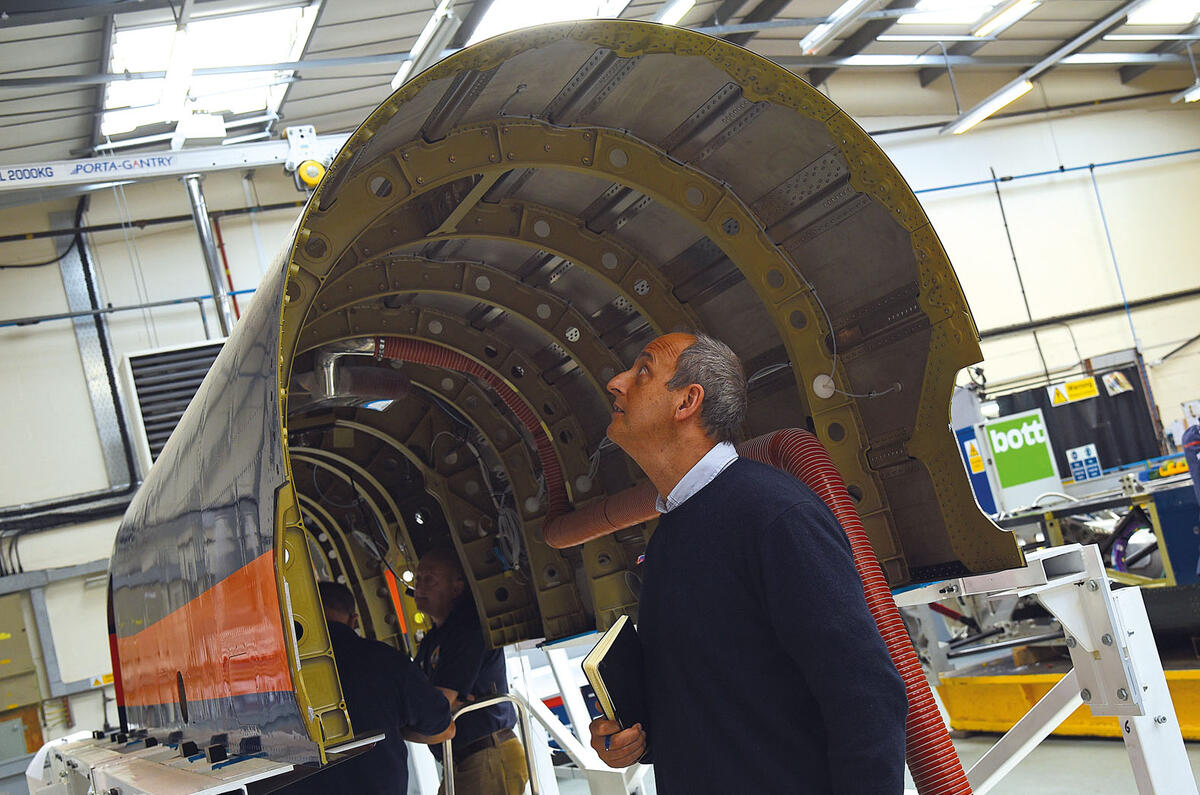
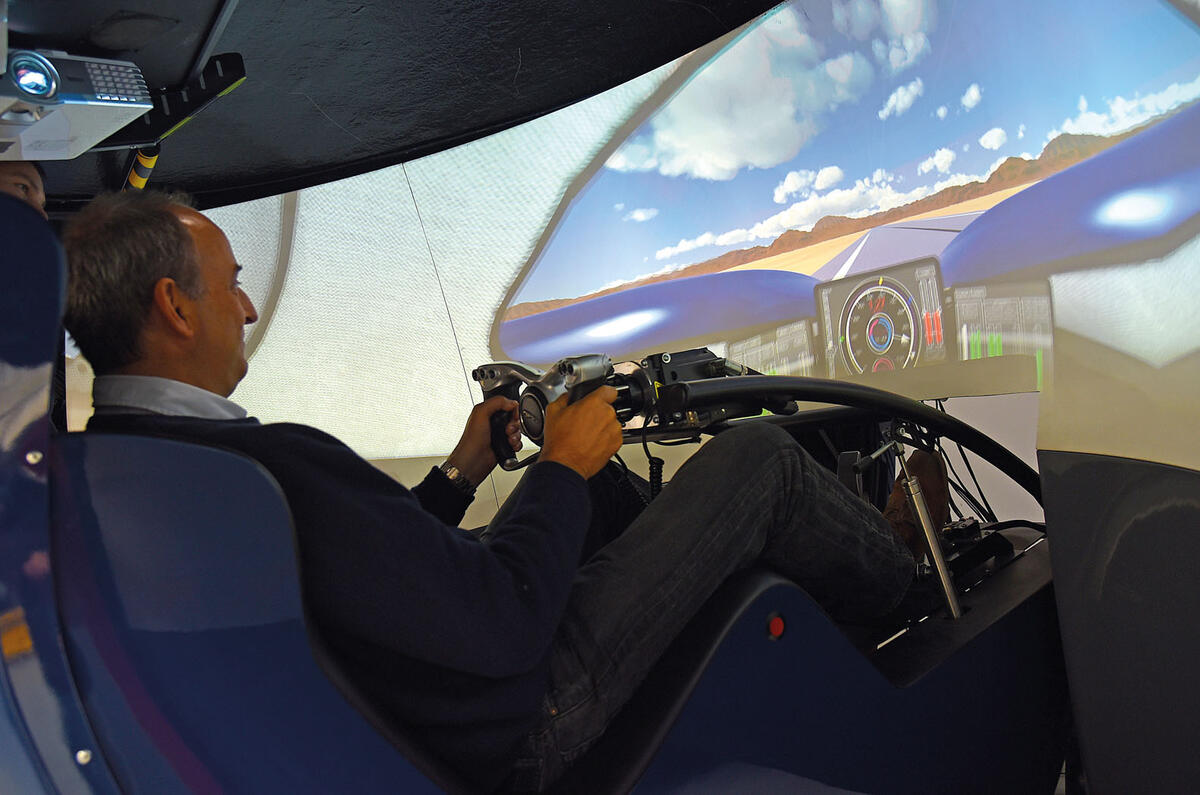
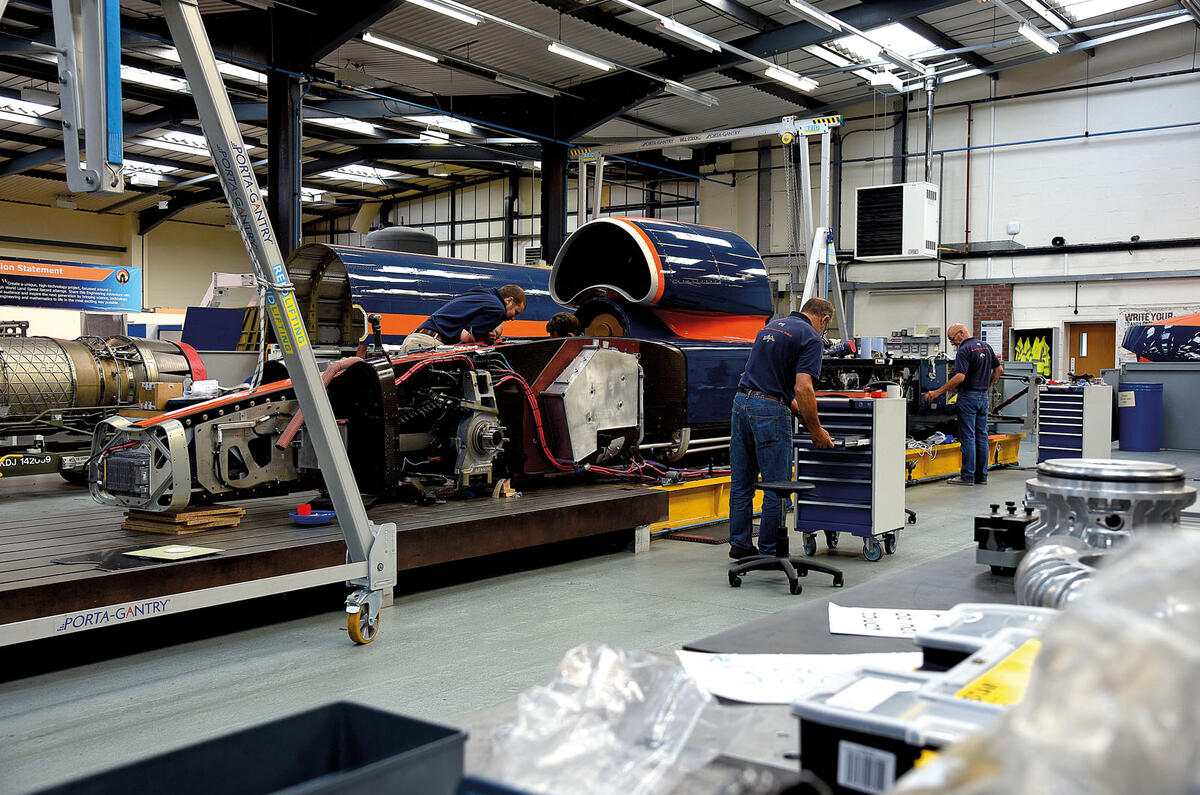
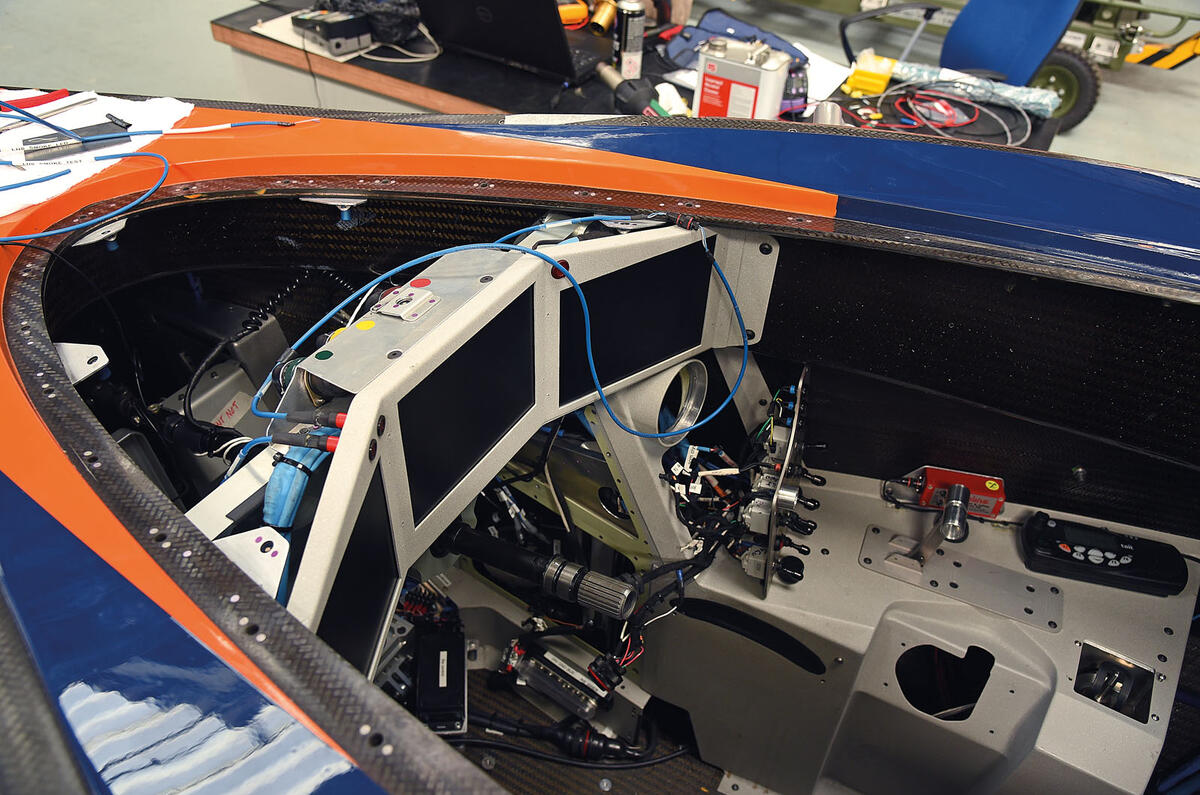
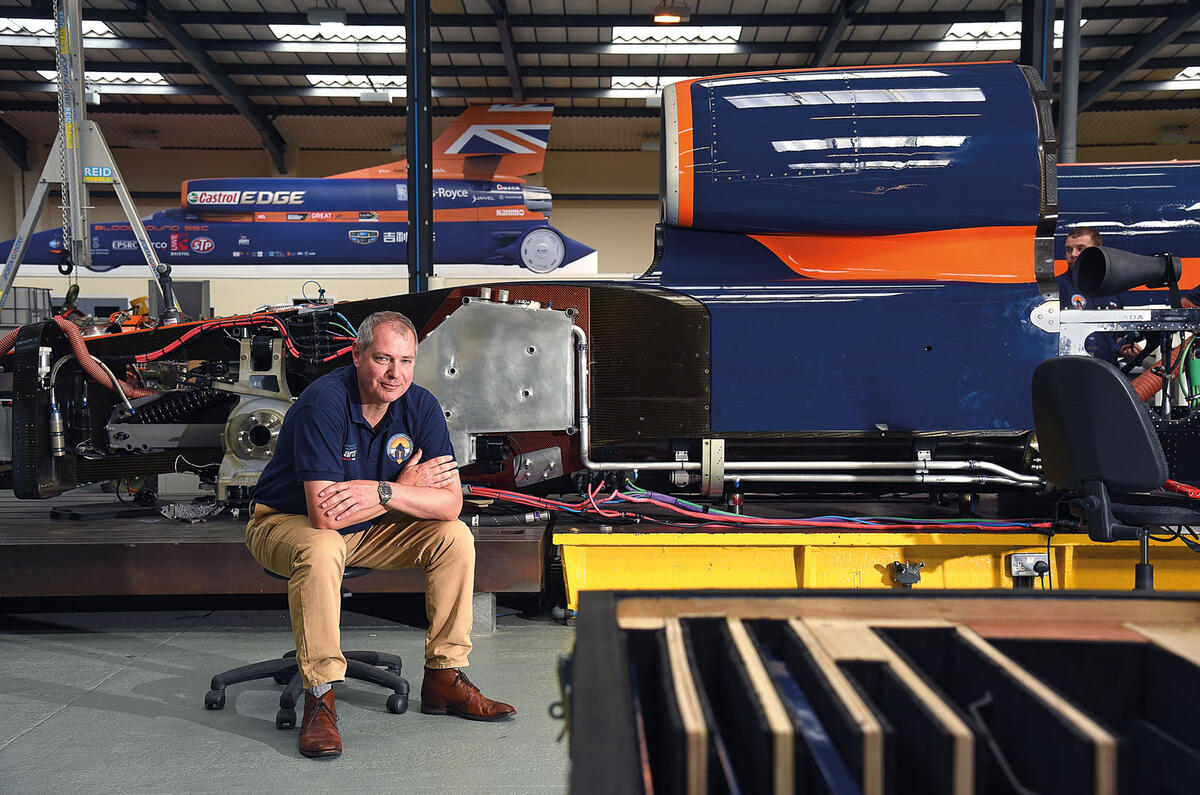

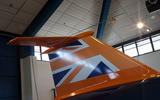
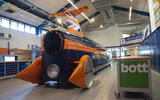


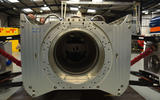
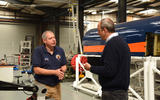
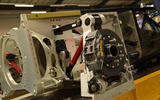
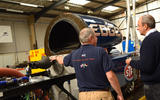




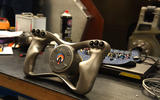
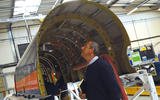
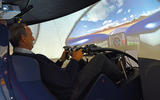
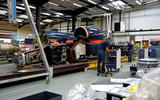
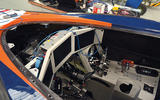
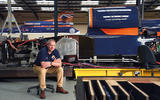


Join the debate
Add your comment
scrap and rybo 1
If you don't like it then go and read about the latest budget hatchback. Can you inform us what cars you drive too please, just interested from a personality profile point of view. Life would be very boring if you two were in charge.
Rybo 1 - If you're a guy, you might need to know that the other main part of male genitalia are balls, and that these guys have them to try and do what no one else has done, to break down huge engineering challenges, to raise a shed load of money, spend 9 years to get this far, and for Andy Green to sit in a land based missile and drive the thing. If we're all just trying to save the planet, save the NHS, do our bit for charity, etc then we've forgetten that it might be a good idea to enjoy ourselves too before we head off this life.
This project is an immense engineering challenge, and in case you didn't notice we're not recruting enough young people into this discipline, and please check the work they're doing with schools, etc on this project. Look on Youtube for various bits about this car and SSC, Thrust 2, etc. So yes a target of 1,000 mph might be arbitary, but why not, it looks impressive in a big penis kind of way and gets headline, which raises the profile and funding. These guys and girls have held the LSR since 1983, 34 years, wow.
I think I was 16 when I saw Thrust 2 at a show somewhere, and it impressed the hell out of me, and I'm not an engineer. When Richard Noble took the record I was for once a proud British guy about our engineering, and I followed SCC because I wanted to know about how they'd overcome and deal with the sonic boom. I had goosebumps when I saw the video on the news with the boom one night.
Yes, I've got my name on the tailfin, yes I bought a tshirt, and I want these guys and girls to succeed big time. Go for it, and any petrolhead worth their salt would be impressed by the fact it uses a Jaguar V8 as its fuel pump.
whatever
Aother large penis project.
Deceptive photographs
Yeah, I saw one on the A96 the other day, they're wider than you'd think from the pictures and with the limited rear visibility look like an absolute nightmare to park, what with the ever shrinking spaces marked out these days. I'd be a bit concerned about luggage space for touring too, but the alloy wheels look lovely. The bets bit is surely the engine, which should be the template for power units in all cars from here onwards.
Oh for an edit option
*best bit